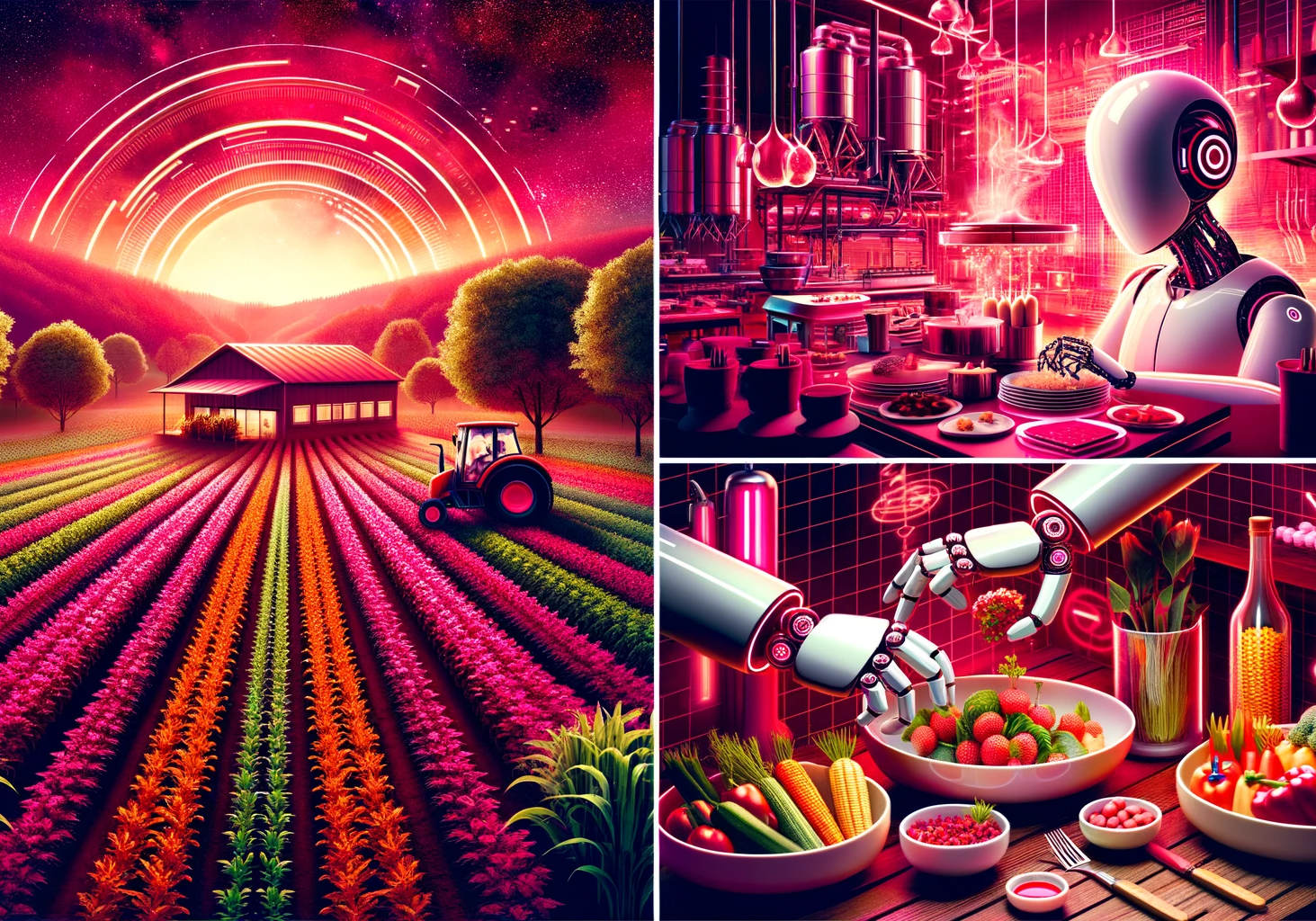In an article published in Nature, the authors explored the significant roles that robotics play in shaping the future of food. From precision agriculture robots that optimize crop management to 3D food printers that revolutionize personal food preparation, these technological advancements have the potential to enhance food quality, sustainability, and accessibility.
 Study: Robotics Reshaping the Future of Food: Precision Agriculture and 3D Printing. Image credit: Generated using DALL.E.3
Study: Robotics Reshaping the Future of Food: Precision Agriculture and 3D Printing. Image credit: Generated using DALL.E.3
Background
Food is vital for sustaining life and well-being. Beyond nutrition, food is central to culture, social bonding, and emotional well-being. A balanced diet is key to maintaining health, while diverse cuisines reflect the richness of human heritage. Access to safe, nutritious food is fundamental for overall human development and quality of life.
In a rapidly changing world, integrating robotic technologies into the food production and preparation processes is emerging as a transformative trend. Robots have come a long way from being a science fiction concept to helping us in our daily tasks. The authors of the present study - Salah Sukkarieh and Hod Lipson - discuss how robots can affect one of the most important aspects of life, Food and present their views regarding Robots in agriculture and Robotic food preparation, respectively.
Agriculture Robotics for Precision Farming
Sukkarieh emphasizes the crucial role of precision agriculture robots in modern farming. These advanced systems go beyond mere mechanization by incorporating various sensors that enable real-time data acquisition, providing a profound understanding of the agricultural environment. These sensors include soil moisture and nutrient sensors, multispectral cameras, radar equipment, and light detection and ranging tools, offering a diverse array of data sources.
Precision agriculture robots excel at maximizing resource utilization through informed decision-making. Their distinguishing feature is their ability to offer tailored care to individual crops down to the level of a single square millimeter. The second aspect of precision involves the robot's capacity to make instant decisions based on sensor data. Equipped with algorithms, these robots can identify plant stressors and weeds, allowing for precise responses.
Robotic Revolution in Personal Food Preparation
Lipson introduces the integration of robotics in personal food preparation, moving away from the idea of humanoid robots. He focuses on food 3D printing, a groundbreaking technology that redefines meal preparation. Food printers use digital blueprints to deposit various ingredients, including liquids, gels, pastes, and powders, and employ software-controlled cooking techniques, such as precision lasers, for simultaneous ingredient deposition and cooking. This innovation offers a wide range of flavors, textures, and nutrient profiles not easily achievable through traditional cooking methods. Customizing meals on demand reduces food waste and caters to specific nutritional needs, transforming culinary practices.
The Quest for Sustainable and Accessible Food
Sukkarieh discussed the eco-friendly aspects of electric agriculture robots, powered by electricity and often integrated with solar panels to reduce emissions and waste. These robots provide a sustainable solution to rising food demand while protecting the environment. On the other hand, Hod Lipson introduces the idea of robotic food printers breaking the health, convenience, and cost trade-off. They create healthy, affordable, and customized meals using natural ingredients. Lipson envisions AI assisting in dietary planning based on individual health data and the potential for 3D printers to create realistic plant-based meat substitutes, enhancing sustainability and flavor in alternative protein sources.
The Cost/Reward Ratio
Sukkarieh stressed the need for a comprehensive view when evaluating the cost-effectiveness of agricultural robotics. While the initial investment is significant, companies often see returns in 2-3 years, especially for labor-intensive tasks. Business models like robot-as-a-service and modular designs enhance feasibility. These robots boost efficiency, reduce labor costs, improve crop yields, and address environmental concerns by minimizing waste. They also stimulate economic growth in related sectors.
Lipson acknowledged that food printing may seem costly and slow but offers unique advantages in nutrition, variety, and freshness. Long-term savings may outweigh initial costs, particularly in nutrition and waste reduction. He likens it to early smartphone adoption, with innovators paving the way for broader acceptance and progress in food preparation.
Accessibility of Robotic Technologies
Sukkarieh highlighted the scalability of agriculture robots and their adaptability to different agricultural settings. These robots can be customized to meet the specific needs of various farming communities, ensuring accessibility. Open-source designs and codebases further democratize access, inviting a global community to contribute and refine the technology. This collective approach accelerates innovation and ensures that robots can be tailored to specific requirements without proprietary constraints. On the other hand, Lipson compares the accessibility of robots in the kitchen to smartphones. Having a smartphone seemed like a dubious idea previously, yet we see a smartphone in everyone’s hand today, and the same could happen for robots.
The Possibility of Robots Replacing Humans
The authors argued that robots are not meant to replace human involvement but rather complement it. New job categories could emerge, such as agricultural data analysts, robot maintenance technicians, and precision farming specialists, offering opportunities for career growth. In the kitchen, just as the microwave became an appliance instead of a replacement for humans, these robots will also follow the same path, by increasing the scope of what can be achieved, not limiting it.
Conclusion
In conclusion, the integration of robotic technologies into food production and preparation has the potential to bring about transformative changes. By optimizing agriculture processes and personal food preparation, these technologies enhance sustainability, nutrition, and accessibility. While they do not replace human involvement, they significantly expand the possibilities for food quality and variety. The challenge is to make these technologies more accessible and ensure a seamless coexistence of robots and humans in the food production chain.